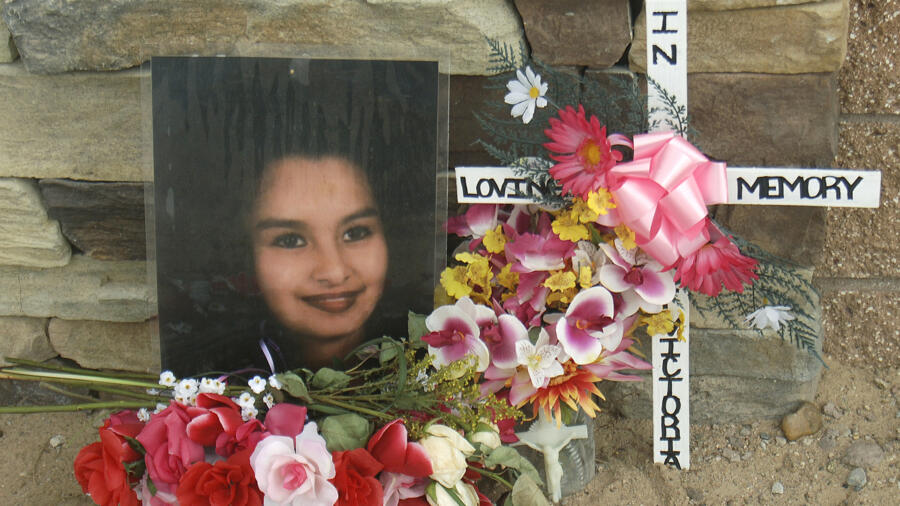Between 2003 and 2006, at least 19 girls and women disappeared on the streets of Albuquerque, New Mexico. Most of them were Latina sex workers in their 20s, and for years, no one knew what happened to them. Then in February 2009, a resident walking her dog in Albuquerque’s West Mesa area made a horrifying discovery: a bone resembling a human femur was sticking out of the ground.
Investigators dug into the site on the West Mesa near 118th Street SW and discovered there wasn’t just one person buried there. Over the next year, the Albuquerque Police Department identified the bones of 11 girls and women who’d disappeared between 2003 and 2005. Their group burial suggested a serial killer, who was later named “The West Mesa Bone Collector,” was responsible for their murders. Yet in the decade since the discovery, investigators still don’t know who killed them; and they still haven’t found the eight other missing women, who disappeared in 2003, 2005 and 2006.
Female prostitutes are more likely to be murdered than other women, and they have a much higher chance of being murdered by a serial killer, according to a 2006 study published in the Journal of Forensic Sciences. There are many reasons for this, including the accessibility of sex workers on the street and the internet, and the fact that many communities already see sex workers as a “problem” that should go away. The 49 girls and women murdered by Gary Ridgway, the “Green River Killer,” in Washington state in the 1980s and ’90s didn’t receive anywhere near the same level of public attention and sympathy as the college students Ted Bundy murdered in the same state in the 1970s.
Of the 11 girls and women discovered at West Mesa, the only one who wasn’t a sex worker or sex trafficking victim was 15-year-old Jamie Barela. She was last seen with her 27-year-old cousin Evelyn Salazar, whose remains were also discovered at West Mesa. In addition to Barela, investigators discovered the remains of another 15-year-old named Syllannia Edwards, the only Black girl identified at the West Mesa site. The other women were Veronica Romero, age 28; Monica Candelaria, 22; Victoria Chávez, 26; Doreen Marquez, 24; Virginia Cloven, 24; Julie Nieto, 24; Cinnamon Elks, 32; and Gina Michelle Valdez, 22, who was four months pregnant.
Christine Barber, executive director of Safe Streets New Mexico in Albuquerque, was shocked by the 2009 discovery of the 11 victims because she hadn’t even known so many girls and women were missing. Friends and family of the victims had reported them as missing persons to the Albuquerque Police Department, but Barber doesn’t recall the department alerting the city that so many girls and women had disappeared off the streets. (The U.S. Department of Justice has been monitoring the Albuquerque Police Department since 2015 due to unrelated civil rights violations).
“I happened to be sitting with another group of volunteers,” when the news broke of the West Mesa murders, Barber tells A&E True Crime. “And one of the women there, Cindy Jaramillo, said she knew all too well what was going on.”
Cynthia Vigil Jaramillo was supporting herself through sex work in 1999 when David Parker Ray, known as the “Toy-Box Killer,” kidnapped and imprisoned her in his trailer in Elephant Butte, a city south of Albuquerque. By then, he had already tortured and murdered as many as 40 women, and would’ve killed Jaramillo if she hadn’t escaped and notified the police.
“She knew very well that if she didn’t escape from him—which she did after three days—no one was going to report her missing,” Barber says. “And no one was really going to pay any attention to [her disappearance], just like the West Mesa cases.”
Jaramillio now sits on the board of directors for Safe Streets New Mexico, an organization Barber founded in response to the West Mesa killings that keeps track of sex workers and alerts the public if they go missing.
Though the West Mesa murder case remains unsolved, one of the primary suspects is Lorenzo Montoya, who lived one to two miles from the burial site and had a history of violence against women and soliciting women for sex. In December 2006, Montoya strangled and killed 19-year-old Shericka Hill, a sex worker he’d met in an online chat room. When Hill’s sex trafficker, Fredrick Williams, followed Montoya to his house, he found Montoya trying to transport Hill’s body. Williams shot and killed Montoya; and after this, the disappearances stopped.
Unfortunately, investigators haven’t been able to detect DNA at the burial site that could provide a match to a killer. Nor do the surviving bones reveal how the girls and women died, though investigators suspect their cause of death was strangulation. Unless someone with knowledge of the murders decides to come forward, it’s very unlikely the police will ever declare the case officially solved, says Dirk Gibson, a professor of mass communication at the University of New Mexico who has written about serial murder. (Investigator Ida Lopez of the Albuquerque Police Department’s 118th Street Task Force declined an interview request, citing the fact that this is an ongoing active case.)
New information about what happened to the eight missing women who disappeared in 2003, 2005 and 2006 could also potentially help the case if their disappearances are related to those of the 11 others. In July 2018, there was a false alarm when a construction crew discovered human remains near the site where the 11 West Mesa victims were discovered. The state Office of the Medical Investigator quickly determined they were likely Native American bones circa 1100 to 1300 unrelated to the disappearances.
The eight women who are still missing, and the ages at which they disappeared, are Martha Lucher, age 32; Anna Vigil, 20; Felipa Gonzales, 23; Nina Herron, 21; Jillian Ortiz Henderson, 19; Shawntell Waites, 29; Leah Peebles, 23; and Vanessa Reed, 24. Anyone with information about them or the West Mesa murders can call the Albuquerque Police Department’s 118th Street Task Force at 1-877-765-8273 or (505) 768-2450, or Crime Stoppers at (505) 843-STOP.
Related Features:
Why Are So Many Indigenous Women in Alaska Coming Up Missing and Murdered?
‘Good Luck Sleeping Tonight’: Serial Killers Plague Almost All Cities
How Inmates Help Solve Cold-Case Murders While Playing Cards


